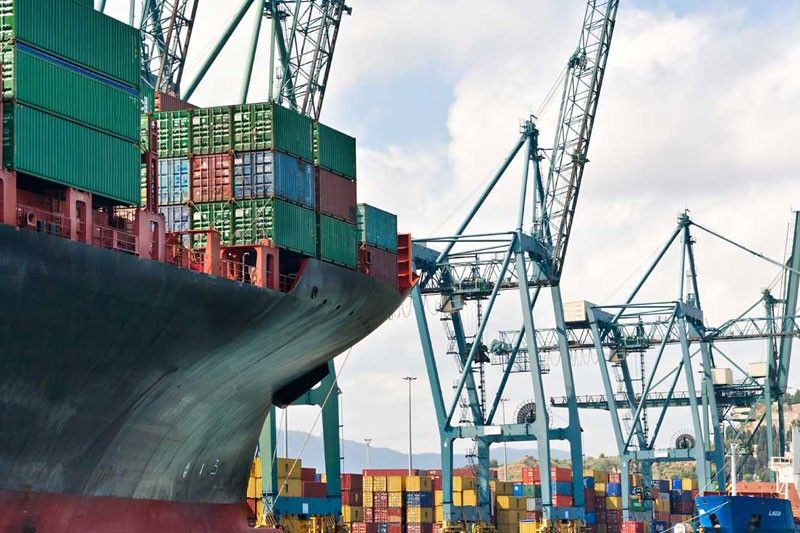Trade deficit widens to $3.32 billion in January

MANILA, Philippines — The country’s export income grew at its slowest pace in more than a year in January, pushing the trade deficit even higher at $3.32 billion from $2.47 billion in the same period last year, the Philippine Statistics Authority (PSA) reported yesterday.
Exports grew by a paltry 0.5 percent to $5.22 billion in January from $5.19 billion in the same period last year due to sluggish shipments of non- electronics and agro-based commodities, the PSA said.
Imports, on the other hand, grew by a double-digit rate of 11.4 percent to $8.54 billion in January from $7.67 billion in the same period last year, driven by the Duterte administration’s huge demand for contruction materials and machinery.
Because of the double-digit growth in imports, the country’s total trade expanded by seven percent to $13.75 billion in January from $12.85 billion in the same month in 2017.
The National Economic and Development Authority (NEDA) said the widening deficit should not be a cause for concern as most of the imports are composed of capital goods and intermediate goods used by manufacturers.
“You have to look also at the composition of the imports as most of these are intermediate and capital goods. These can be used to produce more goods so we are not that worried,” according to NEDA Undersecretary for Planning and Policy Rosemarie Edillon.
She said this is reflected in the return to positive growth territory of the manufacturing sector in January during which
a growth of 21 percent was recorded, reversing the 9.7 percent contraction in December.
“Especially if you analyze this with manufacturing that grew more than 20 percent (in January). It means the goods that were imported were used for production,” she said.
Edillon also said the current trade gap does not yet pose a problem with the balance of payments as the country “still has a very healthy” international reserve position.
Increased importation, she said, would also complement the administration’s infrastructure push as the best technologies and equipment are obtained overseas.
“Since we are trying to close the infra gap—especially if you are talking bridges, airports—it would be good if you import the best technology,” Edillon said.
“With the global economy still set for a higher growth trajectory in 2018, the Philippines is off to a good start. However, it is essential for the national government to continue on its initiatives to support exports growth,” Socioeconomic Planning Secretary Ernesto Pernia said.
He said the government is targeting an eight percent growth in merchandise exports for 2018, supported by a revival of the agribusiness sector.
“To achieve this, the Philippines needs to build up integrated industries that would generate higher value addition, especially for key products such as banana, cacao, coffee, mangoes and rubber as well as for other emerging high value crops,” Pernia said.
He added that it is crucial to support large and small producers and develop niche markets such as organic farming to fully harness the potential of the agricultural sector.
In maintaining greater market access, diplomatic posts play a big role by regularly providing relevant information on emerging products that the Philippines can supply to potential markets.
“Moreover, greater market access can be achieved through bilateral and multilateral deals, such as continued exploratory talks of the Department of Trade and Industry with the United States for a foreign trade agreement or an extension of the US Generalized System of Preference (GSP) initiative, which expired last year,” Pernia said.
Exports of electronic products, which account for about half of total export, expanded by 10.8 percent to $2.62 billion, still a healthy growth, prompting some economists to say the slower growth in overall exports may be temporary.
Japan emerged as the country’s top destination for exports in January with shipments valued at $895.04 million. Other top export destinations were the US, Hong Kong, China, Singapore, Korea, Germany, the Netherlands, Thailand and France.
- Latest
- Trending






























